Extra Rapid Hardening Cement | Advantages & Disadvantages of Extra Rapid Hardening cement | Applications, Properties & Uses of Extra Rapid Hardening cement
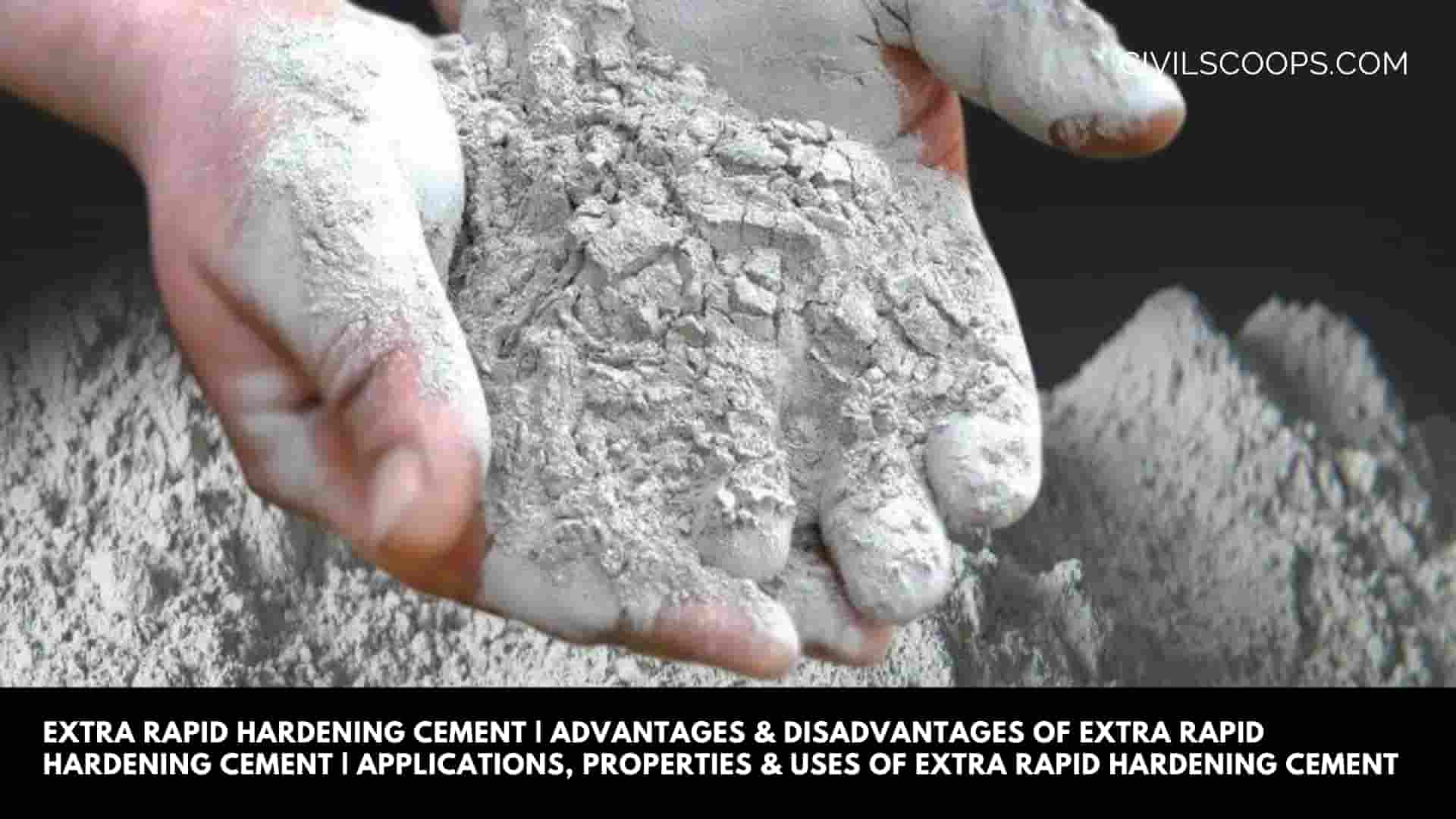
Table of Contents
Introduction to Extra Rapid Hardening Cement
Time is one of the most important factors in construction projects. Time is directly connected to the cost of the project. The use of ordinary portland cement in the construction required more time for hardening and removal of Formwork.
Whereas the Extra Rapid Hardening cement sets faster and also the formwork can be removed earlier. The construction which is done by using Ordinary Portland cement generally takes 24 hours to set and hardened completely and it requires consistent curing. The OPC cement shuttering removal time is about 14 days.
In some special cases, it is not possible to keep shuttering for 14 days. Some construction required to be completed very fast. For example, Construction of roads and underwater construction, in this case, Extra Rapid Hardening cement is used which will set and harden quickly.
In this article, we will go to learn about Extra Rapid Hardening cement and its properties, Advantages, and Disadvantages of Extra Rapid Hardening cement. Extra Rapid hardening cement is basically a modification of the rapid hardening cement.
What is Extra Rapid Hardening Cement?
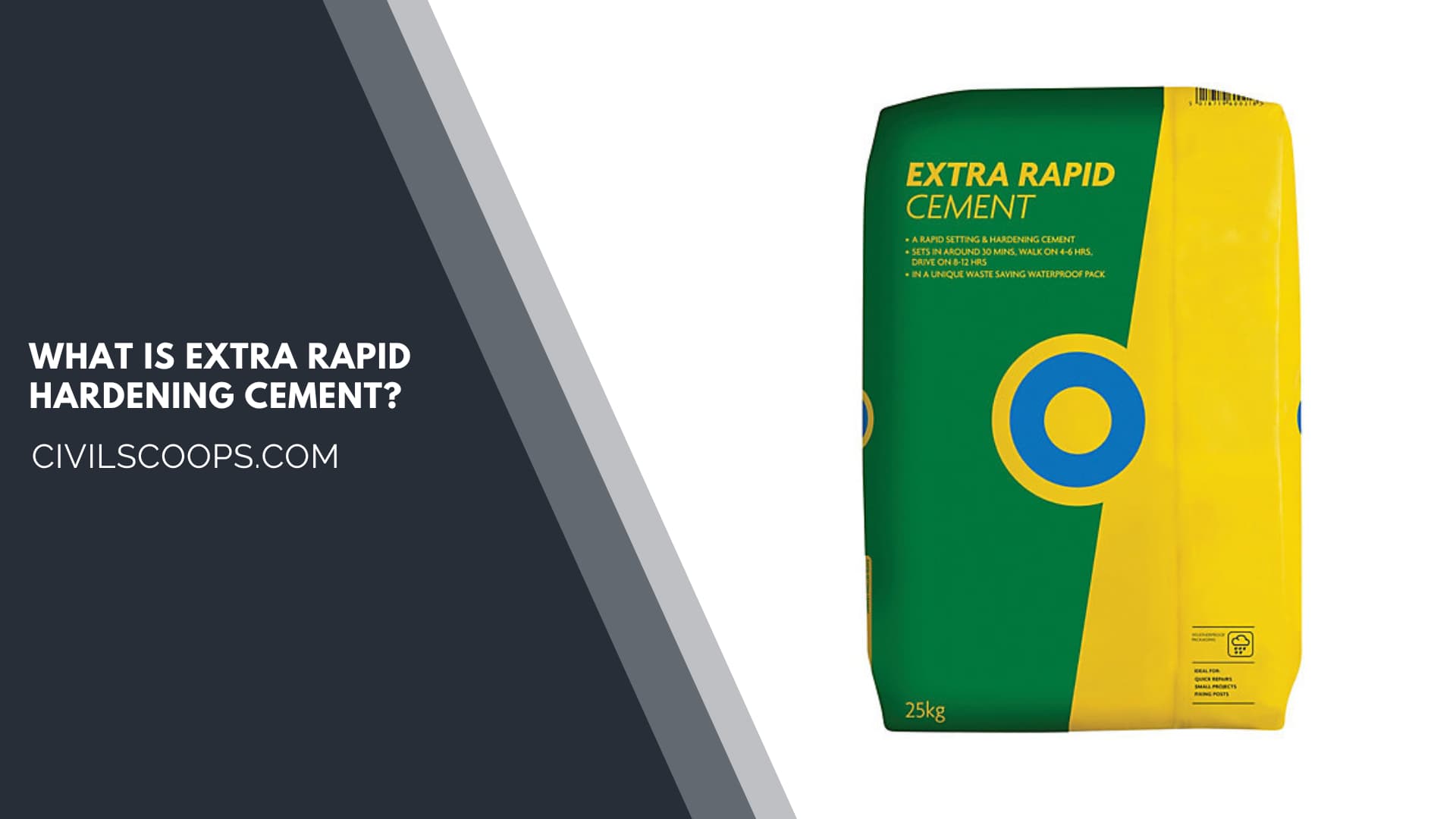
Extra Rapid hardening cement is a special type of cement that sets very quickly as compared to conventional types of cement. Extra rapid hardening cement is made by proper grinding of Rapid hardening cement with Calcium chloride.
The 3% of calcium chloride is added with Rapid hardening cement which will form Extra Rapid Hardening cement. Rapid-hardening cement is also popularly known as High early-strength cement.
In the case of the Extra rapid hardening cement, a large quantity of heat is evolved during its placing in a very less time.
Care should be taken with the Extra Rapid hardening cement should be used within one month of its manufacturing. This type of cement should not be stored for more than one month otherwise it will lose its properties and not give desired results.
The Extra rapid hardening cement should be Transported, placed, and compacted at the construction site within 20 minutes of its preparation. The Extra rapid hardening cement is best suitable for construction and concreting works in cold weather.
If we use Ordinary Portland cement (OPC) for concrete in the cold weather it will lead to the freezing of concrete. The Extra Rapid Hardening cement generates higher heat of hydration due to which it does not freeze even in such an extremely cold climate.
That’s why Engineers recommend using Rapid Hardening cement for construction in cold weather. The Extra Rapid hardening cement should be stored in a cool place and it should be stacked in a safe and stable manner.
Also Read: All About of Portland Cement Uses
Properties of Extra Rapid Hardening Cement
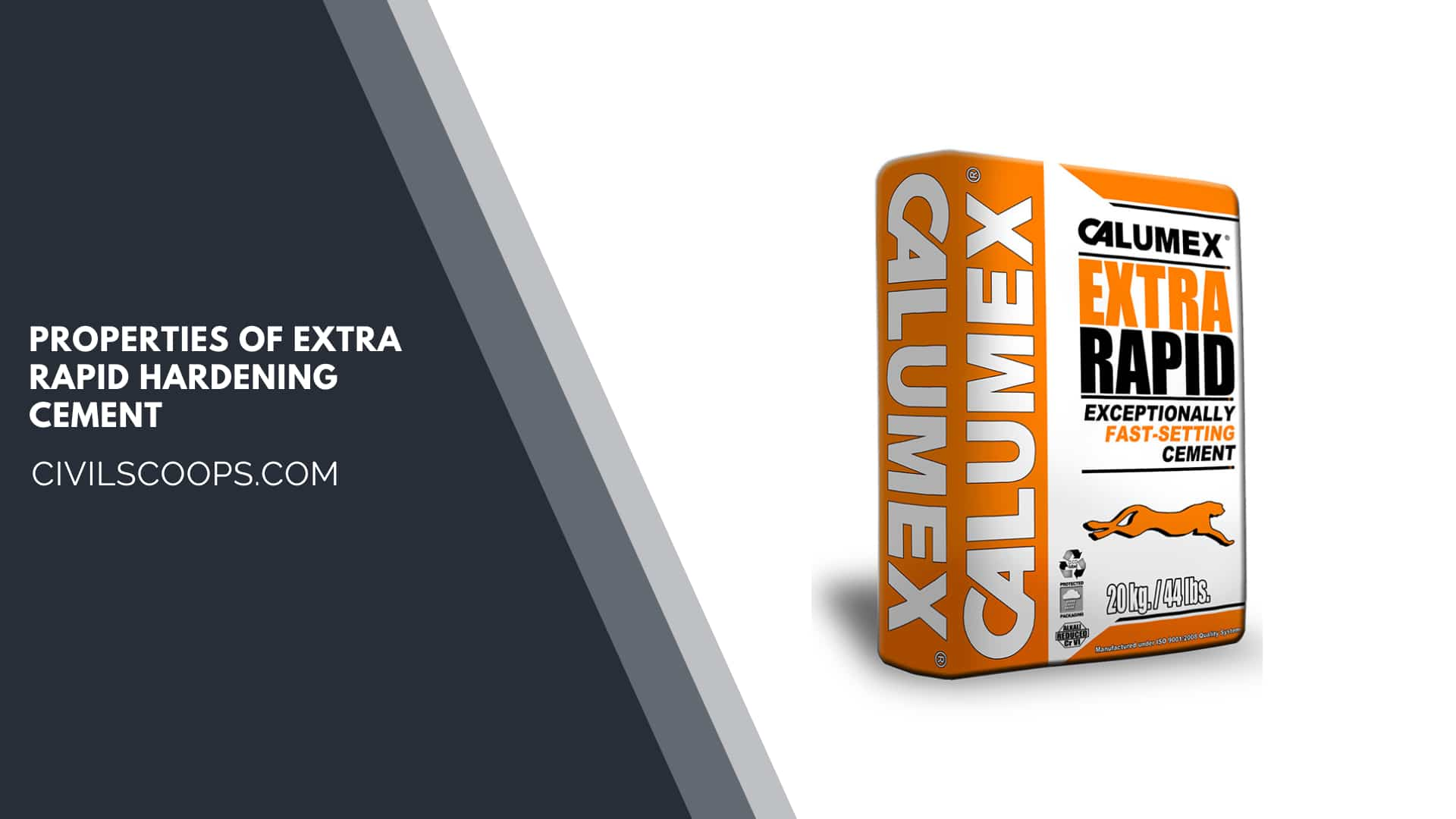
The extra rapid hardening cement possesses various properties due to which it is used in the construction
- The calcium chloride is added and grinds properly in the rapid hardening cement which produces extra Rapid Hardening cement.
- A higher percentage of Tricalcium Silicate(C3S) is added in the extra rapid hardening cement which will help to sets quickly.
- The Tricalcium silicate has the property to generate higher heat of hydration which will help it to quickly set.
- The 3 days strength of extra rapid hardening cement is equal to the 7 days strength of OPC cement.
- The Setting Time of Extra Rapid Hardening cement should not be altered by using various types of admixtures.
Uses of Extra Rapid Hardening Cement
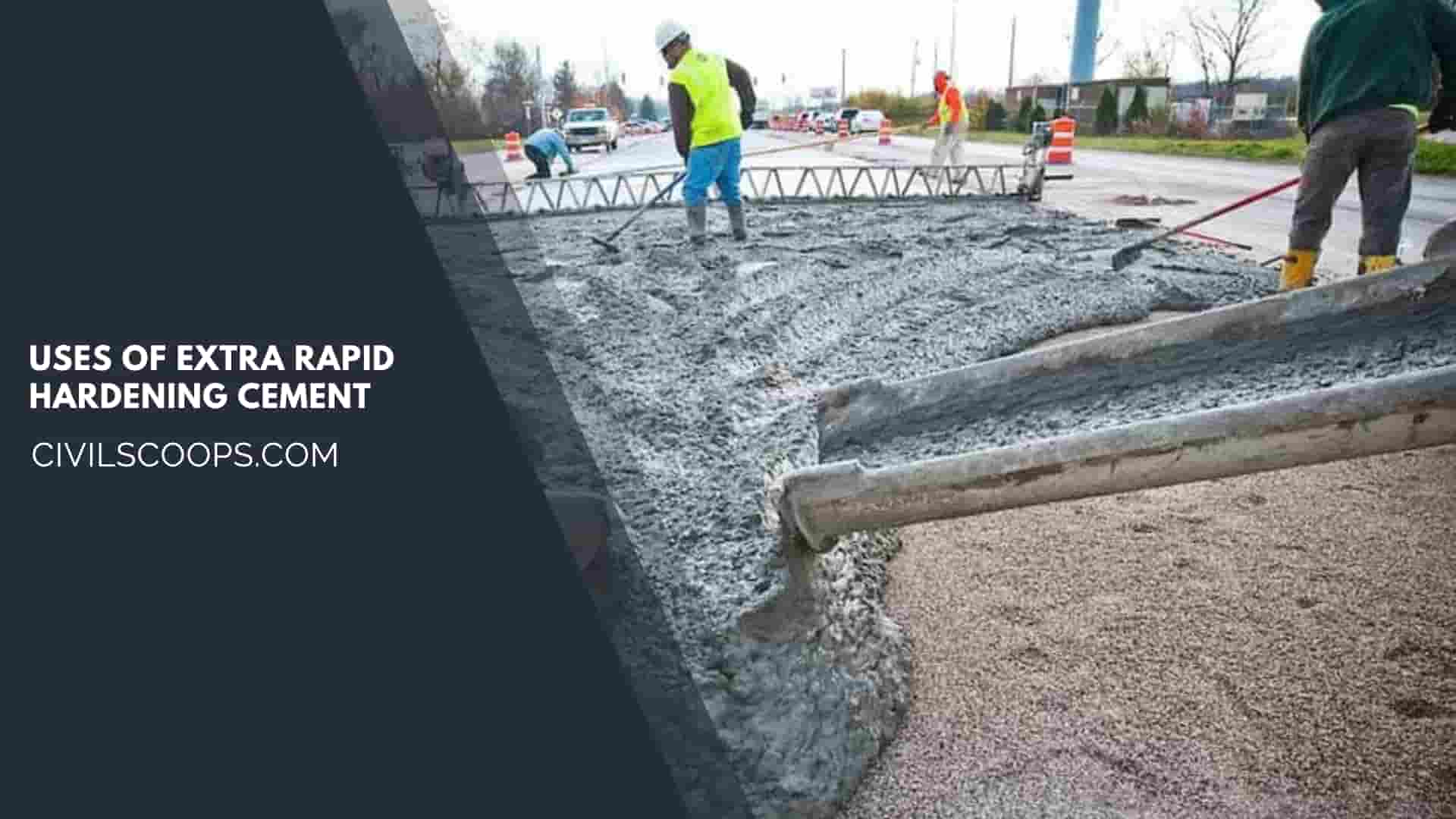
Extra rapid hardening cement used in various construction activities which are as follows
- This cement is used in the construction of structures in waterlogged areas such as Bridges and dams.
- Extra Rapid Hardening cement is suitable for concreting in cold weather.
- This type of cement is best suitable for the construction of roads where the traffic is not allowed to stop for a longer period.
- It is used where high early strength is required in construction.
- Extra rapid hardening cement is widely used where the formwork has to be removed within a short period of time.
Advantages of Extra Rapid Hardening Cement
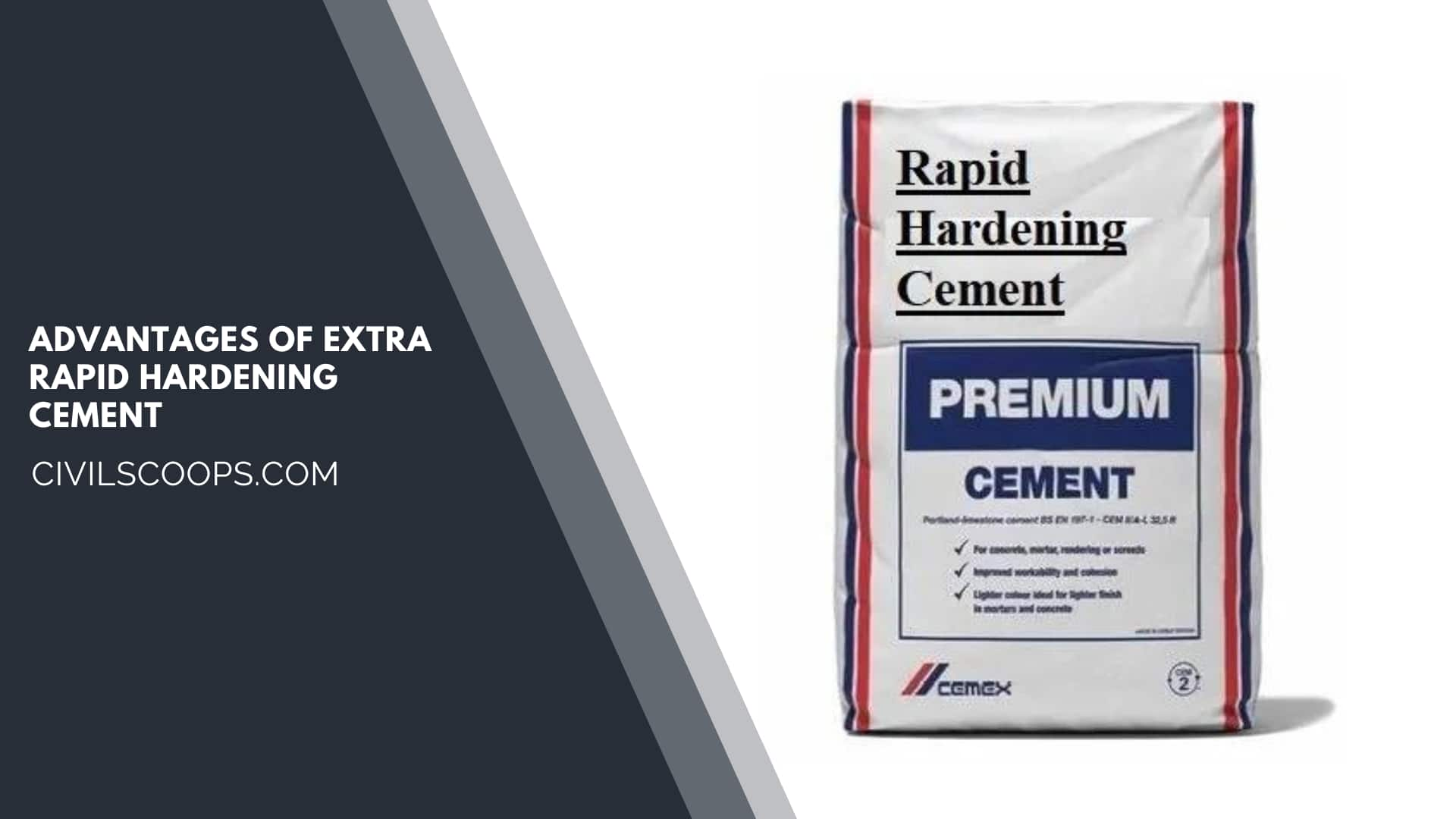
There are many advantages of extra hardening cement which are as follows.
- Extra Rapid Hardening cement sets quickly so it is suitable for concrete in cold weather.
- In the case of this type of cement, we can remove shuttering and formwork earlier as compared to OPC cement. This shuttering and formwork can be used for other work.
- Extra rapid hardening cement is lighter in weight compared to conventional cement.
- Extra Rapid hardening cement is best where early strength is required within a short period of time.
- Extra rapid hardening cement gives higher strength than Rapid Hardening cement.
- This type of cement has good sulfur resistance.
- The curing period of extra rapid hardening cement is less as compared to ordinary Portland cement which makes it Economical.
Disadvantages of Extra Rapid Hardening Cement
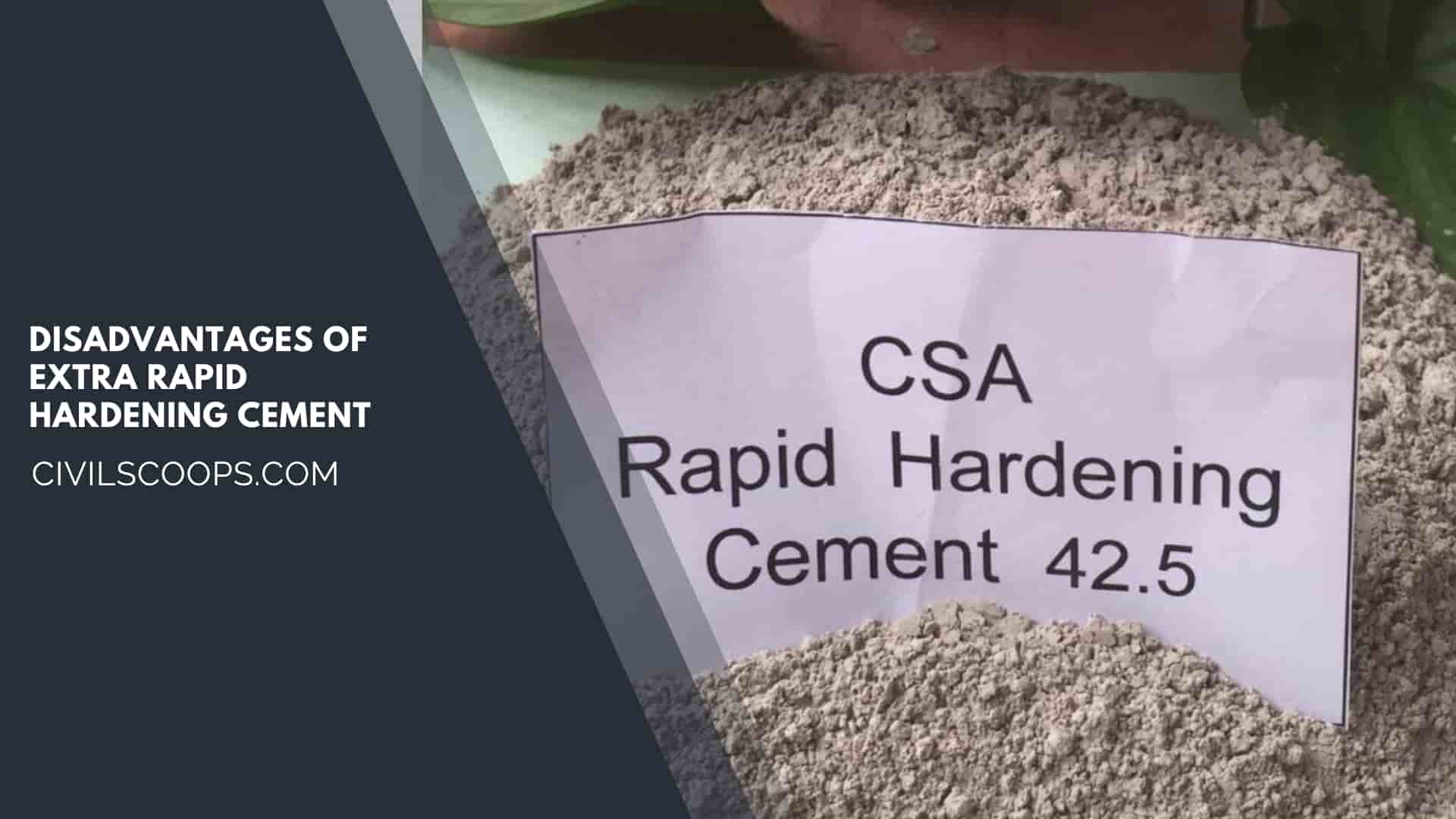
There are also some disadvantages of using extra hardening cement which are as follows.
- The cost of Extra rapid hardening cement is comparatively high than other types of cement.
- In the extra rapid hardening cement there may be chances of developing cracks due to higher heat of hydration.
- Extra rapid hardening cement is not suitable for massive concreting work because it generates Higher heat of hydration as compared to other types of cement.
- The storage of the Extra Rapid Hardening cement is to be done with great care otherwise a little moisture will Harden the cement.
- Extra rapid hardening cement cannot be used after one month of its manufacturing.
Applications of Extra Rapid Hardening Cement
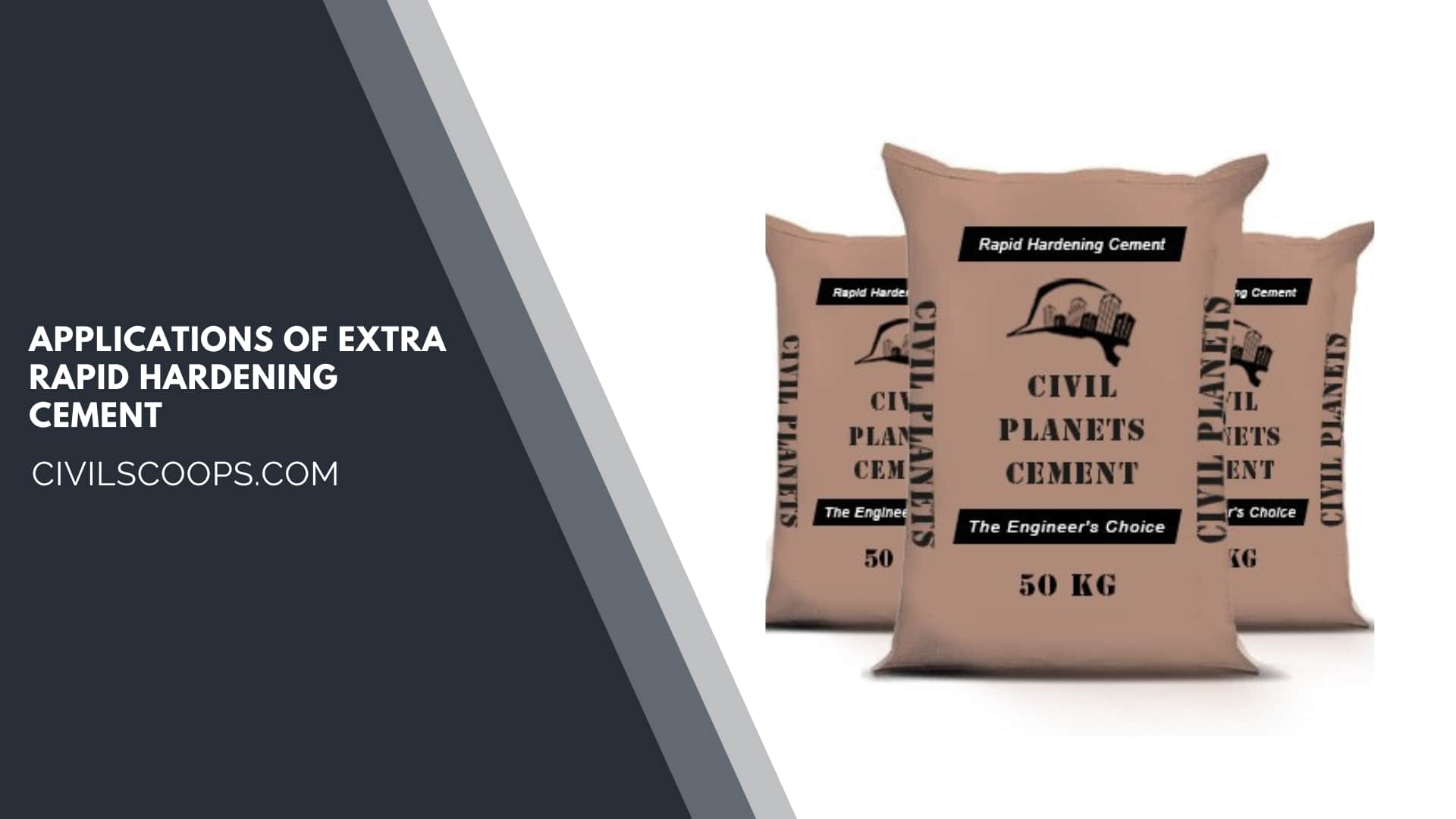
There are various applications of extra rapid hardening cement in the Construction Industry which are as follows
- Extra Rapid Hardening cement is used the construction activities in waterlogged areas.
- Extra rapid hardening cement is widely used in the construction of roads where it is not possible to stop the traffic for a longer time, this cement will allow foot traffic within 4 to 5 hours and vehicles within 8 to 10 hours.
- Extra rapid hardening cement is best suitable for concreting work in extremely cold climate conditions which will resist the concrete from freezing.
- Extra Rapid Hardening cement can be used for the construction of foundations for heavy machinery and equipment in the factories because machinery is required to be installed immediately.
- Extra rapid hardening cement has the property of early strengthening and hardening due to which it is widely used for the repair works of concrete cracks in Dams and roads.
- As this Cement has good sulfur resistance, it can be used at sites where there is a high chance of sulfate attacks.
[su_box title=”FAQ” style=”default” box_color=”#333333″ title_color=”#FFFFFF” radius=”3″ class=”” id=””]
Properties of Rapid Hardening Cement
Properties of Rapid Hardening Cement
- It gains strength faster than OPC.
- Its final setting times is 30 mins and final setting time is 600mins which is same as OPC.
- It emits more heat during setting, therefore this cement is unsuitable for mass concreting.
How Long Does Rapid Set Cement Take to Dry?
As the name suggests, rapid-set concrete is a concrete mix which hardens faster than standard mixes. Whereas traditional concrete will harden within 48 hours, rapid-set concrete will harden within an hour.
Disadvantages of Rapid Hardening Cement
Disadvantages of Rapid Hardening Cement
Rapid hardening cement must be stored in dry areas, which are free from moisture; otherwise, the cement would start hardening even before its use. It emits more heat during setting and hence cannot be used in mass concreting work like dams, raft, foundations etc.
What Is Rapid Hardening of Cement?
Rapid Hardening Portland Cement (RHPC) is a special purpose cement used in concrete to achieve a higher rate of early strength development, compared to using Normal Cement. The improved early performance of RHPC is achieved principally through increased product fineness.
Rapid Hardening Cement Attains Early Strength Due to
It has a higher proportion of limestone and shale (Clinker), which results in early high strength. It has a high proportion of tricalcium silicate (C3S) which boosts up the strength gain, in early stages due to higher heat of hydration.
Is Rapid Set Concrete Strong?
Rapid Set cement concrete achieves structural and drive-on strength in one to two hours, and can achieve a one-day strength that meets or exceeds the 28-day strength of portland cement concrete.
What Do Concrete Trucks Do with Extra Cement?
Having an excess of concrete is not the usual practice for every concrete producer, but Cunningham does confirm that if there is any excess concrete, it gets recycled. A producer may also use it do make concrete blocks, useful for retaining walls or barricades.
Initial Setting Time of Rapid Hardening Cement
Initial setting time = not less than 30 mins. Within this period, solidification begins. Final setting time = not more than 600 mins. During this time, the mixture attains sufficient hardness.
Rapid Hardening Cement Uses
It is generally used for constructing road pavements, where it is important to open the road to traffic quickly. It is used in industries which manufacture concrete products like slabs, posts, electric poles, block fence, etc. because moulds can be released quickly.
[/su_box]
[su_note note_color=”#F2F2F2 ” text_color=”#333333″ radius=”3″ class=”” id=””]
Like this post? Share it with your friends!
Suggested Read –
- What Is Bamboo Flooring | Bamboo Flooring Pros and Cons
- What Is Hardened Concrete | Properties of Hardened Concrete
- What Are Hollow Bricks | Advantage of Hollow Bricks | Disadvantage of Hollow Bricks | Sizes of Bricks Blocks | How to Make Hollow Bricks
- All About Retrofitting | What Is Retrofitting | Why Need Retrofitting | Advantages And Disadvantages of Retrofitting of Building
- What Is Fire Escape Staircases | Types of Fire Escaping Stairs | What Is the Importance of Fire Escape in the Building | What Are the Fire Staircase Requirements
[/su_note]
Originally posted 2023-03-21 09:57:34.
